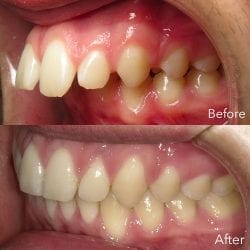
Overbite – Class II malocclusion
This is where the top front teeth bite ahead of the bottom front teeth and create excessive horizontal overbite (technically called “overjet”). This is the most common type of bite problem and can be either skeletal (jaw size mismatch) or dental (teeth tipped so as to produce overjet) in nature. Most often, it is a combination of the two main causes. Treatments are extremely varied and depend on the exact nature of the particular problem!
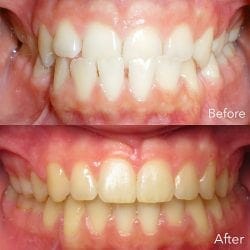
Underbite (Class III malocclusion)
This is where the top front teeth bite behind the bottom front teeth. This too can be either skeletal (jaw size mismatch) or dental (teeth tipped so as to produce underbite) in nature and treatment here will depend on the age of the patient as well as the nature of the problem. This is one problem where early treatment can make the biggest impact.
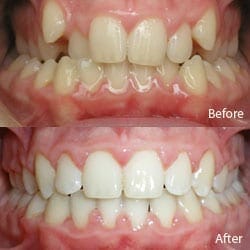
Narrow Jaws
A narrow upper jaw is a common problem and is solved by placement of an upper “expander” device. These are relatively painless devices and no injections are needed to place them. They typically stay in the mouth for 3-4 months and are often used at the start of braces.
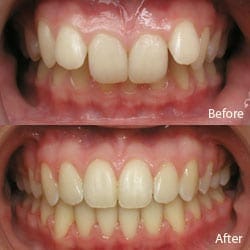
Deep Bite
When biting down normally, the top front teeth should overlap approximately 20-25% of the vertical height of the bottom front teeth. Deep bite is where there is excessive vertical overlap between the top and bottom front teeth.
There are both skeletal and dental root causes to this and the solutions depend on the exact nature of the problem.
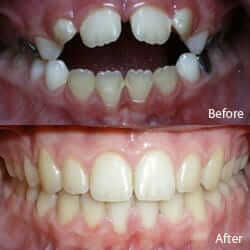
Open Bite
Open bite is the opposite of deep bite. This is the condition where, when biting down on the back teeth, there is insufficient vertical overlap of the front teeth. This is the type of problem where it is difficult or impossible to chew with the front teeth because the back teeth meet before the front teeth have a chance to vertically interdigitate. Treatment of open bite often requires the help of an oral surgeon (either placing temporary implants, or performing a jaw surgery procedure).
Crowding of Teeth
Crowded teeth in either the upper or lower jaw (or both) can be corrected with braces. In some cases teeth will need to be removed, in other cases expansion of the dental arch can solve the crowding problem.
Impacted Teeth
There are two main reasons teeth become impacted. The first is, there is simply no room for the tooth to erupt normally (impaction). The second problem occurs when the developing permanent tooth erupts in the wrong direction or location (ectopic eruption). In either case, orthodontic treatment can usually solve the problem. Often, the help of an oral surgeon is needed to recover impacted teeth during orthodontic treatment.
Oral Habits
Oral habits (thumb sucking, finger sucking, etc) can have an adverse effect on permanent tooth position and, in some cases, even on formation of the jaws! Orthodontic treatment can eliminate the habit problems most of the time and allow the permanent teeth to erupt correctly.
Irregular Teeth
This is the most common reason braces are placed. One of the main purposes of braces is to align irregular teeth and nothing can accomplish this more precisely or predictably than braces.
Early Loss of Baby Teeth
If a baby tooth is lost or removed before the permanent tooth is ready to erupt, a space problem can be created as the body tries to adjust by closing the space. This can create a space deficiency that can lead to the need to remove permanent teeth later. Use of space maintenance devices can solve this problem and minimize the risk that permanent tooth removal will be needed later.
There are, in fact, hundreds of problems that can affect the bite or positions of the teeth and they are too numerous to describe here. We have tried to outline only the most common problems here.